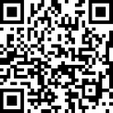“医学尝试双语阅读:失眠”相信是准备学习医学英语的朋友比较关注的事情,为此,医学教育网小编整理内容如下:
Insomnia is more than just being unable to fall asleep. It is a subjective condition of insufficient or nonrestorative sleep despite an adequate opportunity to sleep. The Institute of Medicine and most current studies place the prevalence of insomnia at 30% to 40% in the general adult population. Although the need for sleep does not necessarily decrease with age, the incidence of sleep disturbances appears to increase with age, particularly among women. Actually, the elderly are more prone to sleep maintenance problems, whereas younger people tend to have trouble falling asleep. 失眠并不仅仅是无法入睡。失眠是在有足够睡眠机会时睡眠仍不充分或睡后精力无法恢复的一种主观病症。美国医学研究院和现有的多数研究都认为,失眠在普通成人中的流行率为30%至40%。虽然睡眠需要未必随年龄增长而减少,但睡眠障碍的发生率似乎是随年龄而增加的,特别是妇女。事实上,老年人更容易在睡眠维持方面出问题,而年轻人则往往是难以入睡。
I. Approach. I. 诊断思路:
Insomnia represents a symptom of an underlying problem and is not in itself a disease entity. Sleep and alertness are regulated by a complex interaction between the body's internal biologic clocks, the reticular activating system, and various influences such as light or anxiety that can interfere with the normal sleep cycles. The approach to diagnosis should recognize the potential for various causes and use history and special studies to determine the cause of the insomnia. 失眠是某种潜在疾病的一种症状,失眠本身并不是一种病质。睡眠和觉醒是众多复杂因素相互作用的结果,如人体内生物种、脑干网状激活体系统及其他各种可以影响正常睡眠周期的因素,如灯光、焦虑等。诊断时应该认清各种因素的影响力,并根据病史及其他特殊检查确定失眠原因。
A. Types of insomnia. A. 失眠类型。
Although more than one classification system for insomnia exists, a consensus seems to support dividing insomnia into transient (lasting a few days), short-term (lasting weeks), and long-term or chronic (lasting many weeks to months or years). The Association for the Psychophysiological Study of Sleep has classified insomnia as: 失眠分类方法不止一种,但公认的是将失眠分为暂时性(持续数天)、短期性(持续数周)和长期性或慢性(持续数周、月或年)这几种。睡眠社会心理生理研究协会将失眠分为以下几种:
1.Psychophysiologic, which covers the transient and short-term problems associated with situational factors such as concern about an ill family member. 1. 社会心理性失眠。该类失眠包括暂时性和短期性失眠,通常与环境因素有关,如对生病家属的担心。
2.Psychiatric, especially depression, which has a very high concordance with insomnia, and which also covers other affective disorders and psychosis. 2. 精神病性失眠。尤其是抑郁症引发的失眠,抑郁症与失眠有很高的关联性。其他因素包括情感障碍、精神错乱等。
3.Drugs and alcohol, especially chronic alcoholism, and the use of central nervous system stimulants such as caffeine, nicotine, or other drugs. 3. 药物与酒精性失眠。特别是慢性酒精中毒和服用一些中枢神经系统兴奋剂,如咖啡因、尼古丁或其他药物。
4.Sleep-related movements syndromes. These syndromes comprise a special category related to behavioral or motor problems. Periodic limb movements and restless leg syndrome are the most frequent diagnoses. 4. 睡眠相关运动综合症。这些综合症包括与行为或运动相关的一些特殊疾病,其中以周期性肢体运动和下肢不适综合症为最常见。
5.Sleep-induced respiratory problems (e.g., obstructive sleep apnea). With this condition, the patients usually have no trouble falling asleep initially, but have multiple arousals and awakenings during the night. 5. 睡眠诱发的呼吸系统疾病(如阻塞性睡眠呼吸暂停)。患有这类疾病的病人通常无入睡困难,但在夜间醒来次数多。
6.Medical and environmental causes such as repeated rapid eye movement (REM) interruptions from outside noise. 6. 医源及环境性失眠。如外界噪声多次打断快速眼球运动睡眠相。
7.Unknown causes--the patient may just be a short sleeper. 7. 原因不明性失眠。也许病人本来就睡眠少。
B. Special concerns. B. 特别注意问题。
Potentially, the most serious problem associated with insomnia is related to obstructive sleep apnea. If left untreated, it is associated with oxygen desaturation, hypercapnia, and hypopnea, which can lead to significant cardiovascular problems (e.g., systemic and pulmonary hyper tension, cor pulmonale, and right ventricular failure). 与失眠相关的最严重的潜在问题是阻塞性睡眠呼吸暂时。如不治疗,会并发血氧饱和度下降、高碳酿血症和呼吸减慢,从而导致严重的心血管疾病(如系统性和肺动脉高压、肺心病和右心室衰竭)。
II. History 病史:
A. Characteristics of insomnia. A. 失眠的特点:
Insomnia cannot be diagnosed by the amount of time a person sleeps. Rather, it is distinguished by the daytime consequences of unsatisfactory sleep. A pertinent history for insomnia would include: 不能根据病人睡眠时间长短来诊断失眠。应根据睡眠不足是否影响生活加以鉴别。与失眠相关的病史包括:
1.A history of restlessness, irritability, daytime somnolence, and impaired work or social functioning, which can lead to situational stress. This may be a transient problem, but it can lead to difficulties with initiation of sleep and early awakenings. 1. 不安、易怒、昼间困倦及工作与社会职能障碍,均可导致环境压力。问题可能是暂时性的,但会造成入睡困难和早醒。
2.Use of caffeine or other stimulants, especially over-the-counter medications (e.g., decongestants) that may contain ephedrine or phenylpropanolamine. Late evening exercise can also be a stimulant. Alcohol may help induce sleep, but it interferes with REM sleep and leads to nonrestorative sleep and early awakenings. 2. 服用咖啡因或其他兴奋剂,特别是含有麻黄碱或盐酸基丙醇胺的非处方药(如碱充血剂)。晚间锻炼也有兴奋作用。酒精有助入睡,但干扰快速眼球运动睡眠相,导致早醒和睡后精力未恢复。
3.Affect changes, sadness, hopelessness, and vegetative signs such as weight loss should suggest depression, the most common psychiatric disorder associated with insomnia (Chapter 3.3). This is especially true if the insomnia persists for weeks. Anxiety disorders cause difficulty with getting to sleep, whereas patients with depression may fall asleep more readily but have early awakening. 3. 情感变化、悲伤、无助和营养机能变化引发的一些体征,如体重减轻,可提示抑郁症,它是最常见的失眠相关精神病。如果失眠持续数周,其诊断就更确凿无疑。焦虑症导致入睡困难,抑郁症病人则容易入睡,也易早醒。
4.Medical problems such as peptic ulcer disease and heart failure have been implicated in insomnia (Chapters 7.5 and 9.6). A history of frequent nocturnal urinations can also disrupt sleep and may indicate benign prostate hyperplasia or other prostate problems. Hyperthyroidism can cause irritability and insomnia, as can thyroid replacement therapy for hypothyroidism. Other problems such as asthma, angina, back pain, and sinusitis can also cause sleep disorders. 4. 内科疾病。如消化性溃疡病和心力衰竭,都跟失眠有牵连。夜间尿频中断睡眠,多见于良性前列腺增生或其他前列腺疾病。甲状腺功能亢进可导致易怒和失眠,用甲状腺素替代疗法治疗甲状腺功能减退症时也会出现上述现象。其他疾病如哮喘、心绞痛、背痛和鼻窦炎等也可引起睡眠障碍。
5.Loud snoring, daytime somnolence, forgetfulness, difficulty concentrating, and a history from the bed partner of periods of discontinuation of breathing during sleep of 10 seconds or more should suggest a more thorough evaluation for obstructive sleep apnea. Daytime napping, associated findings of gastrointestinal reflux disease, and hypertension are also suggestive associations for sleep apnea. 5. 严重打鼾、白天困倦、健忘、注意力难以集中、及睡伴对其睡眠呼吸中断10秒种或以上的描述等,这些现象都提示应进行更彻底的检查,以确定其是否有阻塞性睡眠呼吸暂停。昼间瞌睡、胃肠反流疾病相关检查结果和高血压等也提示与睡眠呼吸暂停有关。
6.The bed partner is also a good person to ask about leg movements during sleep. This could be suggestive of a periodic limb movement disorder. A similar syndrome, restless legs, is associated with a history of unpleasant sensations in the legs and a persistent desire to move them. Both conditions cause a delay in sleep onset and nocturnal awakenings. 6. 睡伴也是病人睡眠时腿部运动的良好询问对象,提供情况对周期性肢体运动障碍有提示作用。类似的还有不安腿综合症,它通常伴有腿部不适感,并使患者想要不断地移动两腿。这两种疾病都导致入睡推迟和夜间觉醒。
7.Sleep phase disturbances caused by jet lag or shift work can be characterized by early awakening or by awakening later in the day. 7. 时差或倒班引起睡眠相混乱,其特征是早醒或白天晚醒。
III. Physical examination. III. 体格检查:
The physical examination for insomnia is more a search for other underlying disease states than for any specific signs for insomnia, although hypertension, obesity, and thick neck suggest consideration of sleep apnea. 虽然高血压、肥胖症、短颈都可考虑有睡眠呼吸暂停,但失眠患者的体格检查更多的是检查其有否其他潜在疾病,而非检查失眠的特殊体征。
IV. Testing. IV. 实验室检查:
The diagnosis of unexplained insomnia may involve testing in a sleep laboratory using polysomnography. This provides the opportunity to monitor such parameters as the electroencephalogram (EEG),'breathing, oxygen saturation, and body movements during sleep. Polysomnography can determine the disturbances in chronobiologic rhythms and loss of normal sleep-awake patterns associated with circadian rhythm disorders. The EEG results from the sleep laboratory will demonstrate a patient's ability to progress through the five cycles of normal sleep and where in the process any disturbances may be located. For instance, a short REM sleep latency period from initiation of sleep to actual REM sleep, along with increased REM sleep, and reduced total sleep time with frequent awakenings are all associated with depression. 原因不明性失眠的诊断,应采用睡眠实验室多相睡眠描记仪进行检查,其监测参数包括:脑电波、呼吸、血氧饱和度及睡眠时的躯体运动等。多相睡眠描记仪可确诊时间生物节律紊乱和昼夜生理节律异常导致的正常睡眠—觉醒方式的丧失。睡眠实验室获得的脑电波可证明病人是否经历五个正常睡眠周期和异常出现的位置。如,初入睡至实际快速眼球运动睡眠之间快速眼球运动睡眠期的缩短,快速眼球运动睡眠延长、频繁觉醒导致总睡眠时间减少等,都与抑郁症有关。
V. Diagnostic assessment. 诊断评价:
The key to diagnosing insomnia and other sleep disorders is history and sleep laboratory monitoring. Short-term problems related to difficulty with initiating sleep may be situational or environmental. Long-term problems with sleep_, lasting weeks to months, may be more psychophysiologic such as with chronic anxiety or depression. A thorough history of personalor job-related issues, caffeine, alcohol and other drug use, related medical problems, abnormal leg and body movements at night, problems with daytime napping and somnolence as well as night time snoring, and apnea spells will all direct the practitioner to the cause of most problems. A good sleep study often confirms the diagnosis and leads to specific interventions. 诊断失眠及其他睡眠障碍的关键是病史和睡眠实验室监测。与入睡困难相关的短期失眠一般是由环境因素引起的。持续数周甚至数月的长期睡眠问题更多的是由心理生理因素引起,如长期患有焦虑症或抑郁症。详细的病史检查,包括个人及工作情况问题,咖啡因、酒精及其他药物服用史,相关内科疾病,夜间腿部及躯体异常运动,昼间瞌睡,夜间打鼾及呼吸暂停时间等情况,都可以引导医生找到多数失眠的原因。对睡眠情况进行认真检查通常可以确诊失眠,进而采取特定的治疗措施。
以上是医学教育网小编整理的“医学尝试双语阅读:失眠”全部内容,想了解更多医学英语知识及内容,请点击医学教育网。医学教育网成立至今已有15年,专注医学考试培训教育,已经为数百万学员提供了考证、从业和晋升等专业帮助,赢得了广大医学从业人员的认可和信赖,未来我们依然会为每一位在医学路上不断前进的你,提供便利的学习资源及优质的服务。










 扫一扫立即下载
扫一扫立即下载


